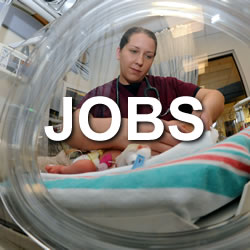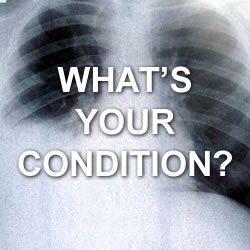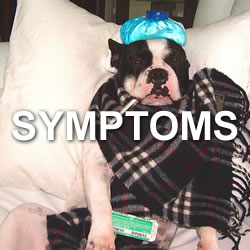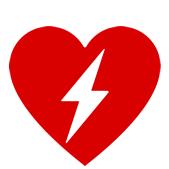Sudden Arrhythmic Death Syndrome (SADS)
Sudden Adult Death Syndrome, a misnomer for Sudden Arrhythmia Death Syndrome, has been studied for decades - Emma Jones

image by: Cardiac Risk in the Young
HWN Recommends
Sudden Adult Death Syndrome is trending — but it’s not a COVID phenomenon
SADS can be caused by a range of disorders responsible for irregular heartbeats (arrhythmias), but are subtle enough to go undetected or are so rare that they are not tested for in routine checkups. These conditions do not cause physical abnormalities or damage to the heart, and instead, interfere on some level with the electrical impulses that causes the heart to beat. Because the heart stops beating after death, it is often difficult to diagnose these arrhythmias, which then leads to the mysterious label. Modern technology, however, has shed light on a few likely causes.
Resources
 ‘He would have done the most extraordinary things’: the shock of losing a loved one to Sads
‘He would have done the most extraordinary things’: the shock of losing a loved one to Sads
Patrick Walters, the producer of TV hit Heartstopper, was in the throes of first love when his apparently healthy partner died in his sleep. Josh’s heart had just stopped beating, with no obvious cause. How close are we to understanding ‘sudden arrhythmic death syndrome’?
 Virtual Hearts Can Help Show Who Is at Risk From Sudden Cardiac Death
Virtual Hearts Can Help Show Who Is at Risk From Sudden Cardiac Death
Virtual hearts are now being used to improve predictions of a person’s risk of sudden arrhythmic death syndrome (SADS), or sudden death from cardiac failure. The syndrome is often linked to genetic factors.
Sudden Arrhythmic Death Syndrome: a stealthy killer
Athletes on the sports field, a young girl thrilled by her first kiss, a teenager collapsing on to his birthday cake, a girl on her morning jog, somebody's son at the wheel, waiting for the lights to change - these are among the long roll of stories in the archives of Cry (Cardiac Risk in the Young).
Cardiac arrests in young people — what causes them and can they be prevented or treated? A heart expert explains
In people aged under 35, there’s no single major cause of cardiac arrest. Some of the conditions that can cause cardiac arrest in young people include...
Study Of Sudden Cardiac Death Exposes Limits Of Genetic Testing
Scientists have discovered that a common cause of sudden heart death has been misunderstood because researchers didn't appropriately account for racial differences in their studies.
Sudden arrhythmic death syndrome
Over the past two decades, a large number of inherited arrhythmogenic syndromes that cause sudden death have been characterised. Some are associated with structural heart disease, such as hypertrophic cardiomyopathy and arrhythmogenic right ventricular cardiomyopathy. Others do not produce structural heart disease. Most are due to inherited abnormalites of cardiac ion channels, such as the long QT syndrome, short QT syndrome, familial catecholaminergic polymorphic ventricular tachycardia and Brugada syndrome.
Sudden Death In Young People: Heart Problems Often Blamed
Sudden death in people younger than 35, often due to undiscovered heart defects or overlooked heart abnormalities, is rare. When these sudden deaths occur, it's often during physical activity, such as playing a sport, and more often occurs in males than in females.
The investigation of sudden arrhythmic death syndrome (SADS)—the current approach to family screening and the future role of genomics and stem cell technology
SADS is defined as sudden death under the age of 40 years old in the absence of structural heart disease. Family screening studies are able to identify a cause in up to 50% of cases-most commonly long QT syndrome (LQTS), Brugada and early repolarization syndrome, and catecholaminergic polymorphic ventricular tachycardia (CPVT) using standard clinical screening investigations including pharmacological challenge testing.
What is Sads? Healthy young people dying from Sudden Adult Death Syndrome
The most common Sads conditions include genetic arrhythmia syndromes such as long QT syndrome, catecholaminergic polymorphic ventricular tachycardia (CPVT) and Brugada syndrome, according to the RACGP.
When a Heart Risk Runs in the Family
Most doctors consider Long QT syndrome a treatable condition. But people must also exercise caution, such as avoiding taking certain medications that can affect heart rhythm, including antihistamines.
 Sudden Adult Death Syndrome is trending — but it’s not a COVID phenomenon
Sudden Adult Death Syndrome is trending — but it’s not a COVID phenomenon
Rumours are swirling online, claiming that a new condition called “Sudden Adult Death Syndrome” has mysteriously appeared since the start of the pandemic and subsequent vaccination campaign. However, this isn’t quite true. While Sudden Adult Death Syndrome — a misnomer for Sudden Arrhythmia Death Syndrome — is a real thing, it has actually been around for decades.
SADS Foundation
The Sudden Arrhythmia Death Syndromes (SADS) Foundation exists to save the lives and support the families of children and young adults who are genetically predisposed to sudden death due to heart rhythm abnormalities.
SADS UK
This website outlines the possible causes of sudden death in young people and children. It concentrates on the medical conditions responsible for a sudden unexpected death where a definite cause cannot be found, even after a postmortem. This is called Sudden Arrhythmic Death Syndrome, or SADS.
Canadian SADS Foundation
Established in 1995, The Canadian Sudden Arrhythmia Death Syndromes (SADS) Foundation, a registered Canadian charity, is the only patient advocacy group in Canada dedicated to supporting families affected by inherited cardiac rhythm disorders.
British Heart Foundation
A condition that causes SADS is undetectable after death because the heart will appear normal. But there are a few conditions that can cause SADS because of very subtle changes to the heart. SADS may still be diagnosed because the structural changes are too small to be seen when the heart is examined after death.
Cardiac Risk in the Young
CRY is a national SADS charity which offers support and information to families who have suffered a loss to SADS.

Introducing Stitches!
Your Path to Meaningful Connections in the World of Health and Medicine
Connect, Collaborate, and Engage!
Coming Soon - Stitches, the innovative chat app from the creators of HWN. Join meaningful conversations on health and medical topics. Share text, images, and videos seamlessly. Connect directly within HWN's topic pages and articles.













